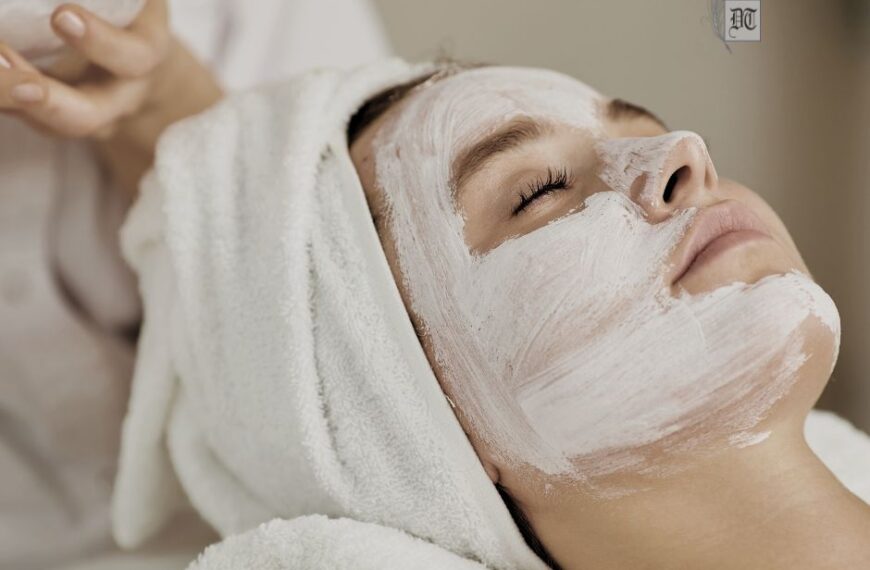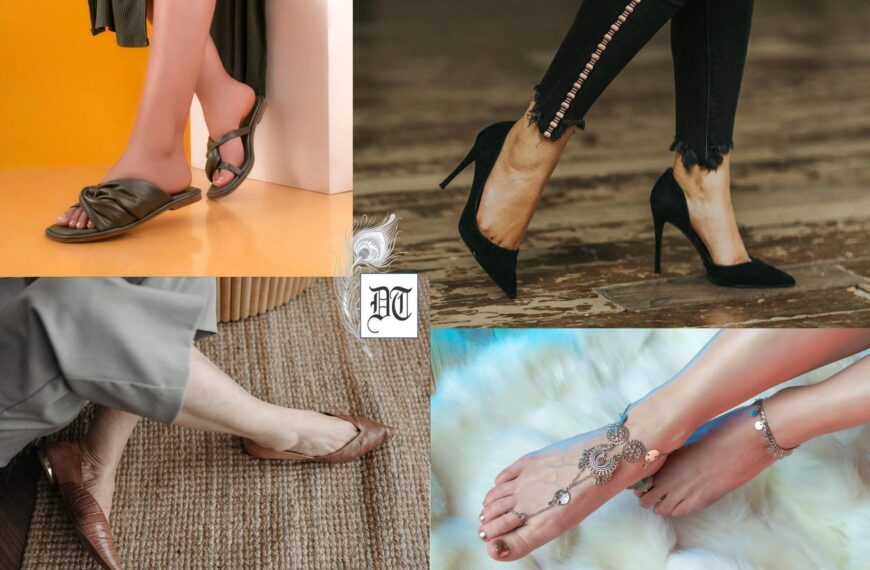Some people rely on erotic or intimate piercings to provide sexual enhancement and may enjoy the mere sensation of being pierced. Other people may wear a few select piercings to adorn and enhance their appearance. Our Fashionista, Kuala Lumpur-based Shameena, talks about the erogenous zones of the body that are pierced, in two parts. Here’s the second and final part of her in-depth research, in the weekly column, exclusively in Different Truths.
The first part of the article dealt with the history, tradition, legacy of body piercings. In this part, the piercing of the erogenous zones of the body is dealt with, ending with the do’s and don’ts of the piercings.
History of Nipple Piercing
It’s well known that Roman Centurions wore fitted leather armour breastplates that sometimes had rings placed where the nipples appeared to be so that a cape slung over the shoulders could be attached to the rings. That practice led some people to say that those same soldiers had their actual nipples pierced, too, so that they could secure a cape even when not wearing their armour. However, anybody who has had their nipples pierced would tell you that this would be a very uncomfortable practice. So if it didn’t begin with Roman Centurions, what did start the practice of nipple piercing?
In the middle of the 14th century, many women suddenly wore such low necklines that you could see nearly half their breasts. This fashion eventually led to the application of rouge to freely-displayed nipples, those ‘little apples of paradise’ and to placing diamond studded rings or small caps on them, even to piercing them and passing gold chains through them decorated with diamonds.
In the late 1890s, the ‘Bosom Ring’ came into fashion briefly; they were sold in expensive Parisian jewellery shops. These ‘Anneux De Sein’ were inserted through the nipple, and some women wore one in each nipple and linked them with a delicate chain.
Nipple piercing was also known to be practiced by the Karankawa Indians of Texas, and it is still practiced in the Mountains of Algeria, by women of the nomadic Kabyle tribe. In the west, nipple piercing has made a resurgence.
Benefits of Nipple Piercing
The benefits of nipple piercings are the same today as they were for the fashionable ladies of Paris and London, in the 1890s. It makes the nipples larger, make breastfeeding easier, more sensitive, and more sexually attractive, and it provides constant stimulation.
Clitoral Hood Piercing
The word “clitoris” first appeared in the English language in 1615; it was used in an early anatomy book to describe a small, sensitive organ located underneath the upper apex of the Labia Minora. At some point, thereafter, perhaps around the same time that the sexual benefits of nipple piercings were discovered in the 1800s, someone began experimenting with clitoral piercings and soon discovered that the clitoral hood was the safest area around the clitoris to pierce to increase sexual sensitivity without damaging the clitoris.
Prince Albert (PA) Piercing
The Prince Albert Piercing is named after Prince Albert, who was the husband of Queen Victoria of England. He was reputed to have had this piercing done prior to his marriage to the queen around 1825. At that time, Beau Brummel started the craze for ultra-tight men’s trousers. Because the pants were so tight, the penis needed to be held to one side or the other so as not to create an unsightly bulge. To accomplish this, some men had their penis pierced to allow it to be held by a hook on the inside of the trousers. This piercing was called a “Dressing Ring” at the time because tailors would ask if a gentleman dressed to the left or the right and tailor the trousers accordingly. To this day, tailors will ask if you dress to the left or right, all because of the dressing rings that were named after Prince Albert!
Sexual Effectiveness of PA Piercings
The Prince Albert Piercing is a very effective tool during intercourse; that’s why it’s the most popular male genital piercing. It provides greater stimulation to both partners during sex.
Fraenulum Piercing
The piercing of the Fraenulum is probably the second-most popular male genital piercing. It’s usually incorrectly referred to as a Frenum Piercing, but this is an abbreviated version of the true word Fraenulum. The Fraenulum is the small ridge of flesh joining the foreskin to the Glans of the penis. In most cases, circumcision removes or destroys it. However, in rare cases it still exists after circumcision. It was found occurring among tribal people.
Foreskin Piercings (Kuno)
The practice of piercing of the foreskin for the insertion of jewellery is as old as circumcision; it’s of immemorial antiquity, going back far beyond the earliest recorded history.
During the Games of Ancient Greece, the athletes performed nude, and to prevent their penises moving about, they bound the foreskin with a ribbon and tied it to the base of the penis. This ribbon, or leather thong, was called the ‘Kynodesme’ from the Greek ‘Kuon’ (foreskin) and‘Desmos’ (fastening band). This temporary practice probably led to the permanent piercing of the foreskin, either to prevent slaves and athletes from having sex or keep them from having erections. The Romans used a practice called Infibulation, which involved two piercings going through the foreskin (or labia in women) and a lock (fibula) being placed therein.
The prevalence of the practice is attested to by the number of references to it found in ancient writings.
Palang & Apadravya Piercing
The piercing of the glans of the penis for the insertion of jewellery is a very ancient practice. The Apadravya Piercing is mentioned in theKama Sutra (700 AD) and the Palang piercing has been practiced in Southeast Asia for several hundred years. Several genital piercings originate in Asia, where piercing has been practiced since antiquity.
The Palang (often incorrectly called Ampallang piercing) is a piercing that occurred among the Kayan, Kenyah, Kelabit, Dayak, and Iban tribes of Sarawak on the Island of Borneo. It involves piercing the glans of the penis horizontally and inserting a barbell. The term Palang translates as ‘Crossbar’ in Iban and can be related to the timber roof supports of the longhouses of the tribes of the area; it symbolises the protective power of the male over the family.
The operation is performed only on adults. The skin is forced back, the penis is placed between two small planks of bamboo for ten days and it is covered with rags dipped in cold water. Then the glans is perforated with a sharp bamboo needle; a feather dipped in oil is placed in the wound until it heals. Wet compresses are used all the while. When the Dayaks travel and work they carry a feather in this canal. As soon as they grow desirous, they pull the feather out and replace it with the Ampallang. The Ampallang is a little rod of copper, silver or gold, four cm long and two mm thick. At one end of this rod is a round-ball or pear-formed object made of metal; at the other end, a second ball is placed as soon as the Ampallang is affixed. The whole apparatus is, when ready, five cm long and five mm thick. The function of this device is, superficially, to add to the sexual pleasure of the women.
Guiche (Geesh) Piercing
The word Guiche is supposed to mean an opening in French, but the actual translation is ‘window’. This is a piercing of the male perineum, in between the anus and testicles. This piercing is supposed to be a Samoan puberty ritual. The puberty ritual practiced in Samoa is sub-incision, which is where the underneath of the foreskin is cut down to the fraenulum.
This piercing originated in Tahiti. It was typically done between ages 12 and 14, followed by a leather thong, with a small weight (either a rock or a shell) hung from the thong once the piercing was healed. The procedure was performed by a ‘Mahu’; in Tahiti, a Mahu is a transvestite male, who has taken on the role of a woman. They are highly respected members of society, and they are said to possess magical powers by adherents of the ancient Tahitian religion. However, as in Samoa, there is no literature documenting this piercing being performed in Tahiti.
The ancient Polynesian mariners used to judge their direction by the movement of the waves. The best way to gauge that movement was to squat down and feel the movement through the swinging of the testicles. The Raphe Perineum where the Guiche piercing is done contains a large bundle of nerves, and having a weight hanging from a Guiche piercing could possibly have helped the ancient mariners derive their direction, but this is only speculation.
Hafada (Scortum) Piercing
A Hafada piercing is typically performed on the side of the scrotum, where there is a crease. It is supposed to have originated in Arabia and spread through Northern Africa and the Middle East from there. The piercing is carried out as a puberty ritual; it is generally done on the left-hand side of the scrotum, although modern Hafada piercings may be performed in various places on the scrotum or as a ladder, with several rings in a row. The piercing was supposedly brought back to Europe by French Foreign Legionaries when they were stationed in what is now Lebanon and Syria.
There’s no evidence that scrotum piercings are practiced by any primitive tribes. It’s really a modern western invention. Some people have an incredible number of piercings through their scrotums.
Where to go for Piercing?
If you’re ready for a piercing you’ll need to find a reputable piercer you can trust. Call around or seek reputable establishment by referral or word of mouth. If you have a trust tattoo artist ask who they could recommend. You’ll likely find a piercer who shares the same standards of professionalism and skill as your tattooist.
Since there is no formal education or standard requirements for piercing, you’ll need to trust your instincts and find an expert, who is professional, knowledgeable, sanitary, and who puts you at ease based on their understanding of the procedure and the piercing establishment.
What not to do?
No matter how easy the craft looks, do not try piercing yourself at home. Sterilisation of equipment, proper placement, and piercing techniques are essential for a positive piercing experience and to prevent the possibility of disease, infection or scarring from dirty needles or improper aftercare.
Heal and Recover
Allow your new body piercing to heal properly. Don’t play and poke your body and by all means, don’t allow anyone else to either. Clean your piercings and follow your piercer’s instructions for aftercare diligently.
Most of all, decorate and adorn your new body enhancement. Find jewellery styles that compliment your personality and appearance. Different metals, gemstones, and colourful beads can really change your look.
Body piercings can enhance your best features and distinguish your personal and fashionable style, so don’t be shy; celebrate your individuality with body jewellery and express yourself with metal.
[Concluded]
©Shamina Abdurahiman
Photos from the internet.
#BodyPiercing #ErogeunousPiercing #AncientBodyPiercing #TheArtOfBodyPiercing #HistoryOfBodyPiercing #FashionFunda #DifferentTruths










 By
By

 By
By
 By
By